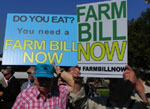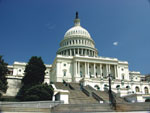In Mary Shelley’s classic 19th-century horror novel Frankenstein, all manner of troubles result after a scientist brings a dead human back to life. Today, the term “Frankenfood” is often used by activists to demonize genetically-modified plants. Attacks on the use of biotechnology in the 21st century are themselves coming back to life, after having been mostly dormant the past decade. Just as in the fictional account of Dr. Frankenstein and his monster, the real-life reinvigoration of the anti-GMO food movement is creating all sorts of new troubles for food producers. It’s as if the past 200 years of scientific progress and enlightenment are being cast aside by forces that focus on fear and demagoguery, not the facts.
It’s a bit puzzling why this issue is resurfacing, given that the production of genetically-modified corn, soybeans, cottonseed, and canola on millions of acres has been growing for more than 15 years, without a single food safety issue – not one – arising during this period of widespread use. There was an initial surge of criticism of biotech seeds in the late 1990s, and then the issue seemed to fade…until lately. The expensive and testy ballot initiative in California two years ago, over whether to require the labeling of foods using GMO ingredients, certainly gave new life to the issue. Similar recent state labeling proposals and popular referenda, along with efforts at the federal level to establish biotech food labeling, are adding fuel to the fire.
What’s new this time around is that anti-GMO groups are now attempting to target specific brands in the value chain, from processors to retailers to foodservice companies, urging them to repudiate the use of any GMO ingredients in their food supply. There’s no clear reason articulated as to why these products should be eliminated or targeted for labeling, other than vague insinuations about the fear of the unknown. This, despite the fact that biotech seeds and plants have been subject to rigorous scientific testing, review, and approval by government authorities worldwide.
So far, these efforts, led by groups such as GMO Insider, haven’t harvested any changes in behavior. But the consequences for livestock producers, including dairy farmers, would be severe if the question about how to produce food becomes focused on eliminating GMO seeds from the process.
Anti-GMO activists are seeking to drive a wedge between the decision-makers across the food production chain, since our complex system necessarily involves the unique choices of many individual suppliers. Food processors and marketers have little or no means of controlling or verifying the choices that go into the production of livestock at the start of the value chain. And for farmers, they have little to no ability to provide the types of often technical details that justify their decision to use GMO seeds as they raise cows and other meat, milk, and egg-producing animals.
The rationale for using modified seeds is clear: these plants help reduce soil erosion, increase the crop yield, reduce the amount and number of pesticides needed, and cut the carbon footprint of agriculture because less tillage requires less fuel. In a world where the population is growing, but arable land and fresh water are not, GMO seeds have a critically-important role to play in both the developed and developing world.
In America, these benefits have resulted in widespread adoption of GMO products. Today, 90+% of corn, soy, cottonseed, and sugar beets are genetically modified, meaning there are few remaining acres devoted to producing “traditional” feed crops. At the farm gate, the demand for GMO seeds is emphatic and undeniable. But at the grocery store, efforts to sow misunderstanding and harvest mistrust of GMO products are likewise undeniable. Witness the fact that retailer Whole Foods will spend the next five years verifying whether all of the foods it sells, including livestock products, were fed or produced with GMO ingredients.
This type of activism ensures that the issue will not quickly disappear. The use of social media to generate vocal opposition to certain food production tools, including GMOs, is likely to fan the flames in the future. But there’s good news as well as bad news here.
The fact that there’s a great deal of misinformation about food biotechnology is indeed a cause for concern, but it’s also an opportunity for those who understand and support the technology. The National Milk Producers Federation is working with other farm groups to share information about how genetically-modified food plants help increase crop yields and decrease chemical inputs including fertilizer and pesticides. Coalitions like the U.S. Farmers and Ranchers Alliance (through its FoodSource online tool) have devoted considerable resources to providing clear, fact-based resources that help dispel the misconceptions surrounding the use of GMO feeds.
As is always the case, the best proponents for a particular product are its practitioners – in this case, the farmers who grow and harvest the crops. Sixteen million farmers around the world use biotech crops, and not just in the U.S. The social media tools that farmers need to explain their choices will, in the future, be just as important as the technology itself that creates GMO seeds. That’s a great opportunity, and also an obligation we can’t hesitate to pursue.

 Congress left Washington August 1st for a five-week recess, with the fate of the 2013 farm bill still very much up in the air. Prior to leaving town, House Republican leaders negotiated a farm bill nutrition title that raises to $40 billion the level of cuts to food stamp programs. This food stamp-only measure is likely to be voted on once the House returns Sept. 9.
Congress left Washington August 1st for a five-week recess, with the fate of the 2013 farm bill still very much up in the air. Prior to leaving town, House Republican leaders negotiated a farm bill nutrition title that raises to $40 billion the level of cuts to food stamp programs. This food stamp-only measure is likely to be voted on once the House returns Sept. 9. After a promising start in 2013, efforts to reform America’s immigration policies have stalled in the House of Representatives, and frustration is beginning to spread in the organizations that have worked on the issue, from agriculture, to the business community, to religious groups.
After a promising start in 2013, efforts to reform America’s immigration policies have stalled in the House of Representatives, and frustration is beginning to spread in the organizations that have worked on the issue, from agriculture, to the business community, to religious groups. NMPF’s campaign to reposition the REAL® Seal program continued in July, with a big push to garner visibility on Facebook, where in less than two months, the
NMPF’s campaign to reposition the REAL® Seal program continued in July, with a big push to garner visibility on Facebook, where in less than two months, the  Stress Importance of Trade in Safe Foods
Stress Importance of Trade in Safe Foods



